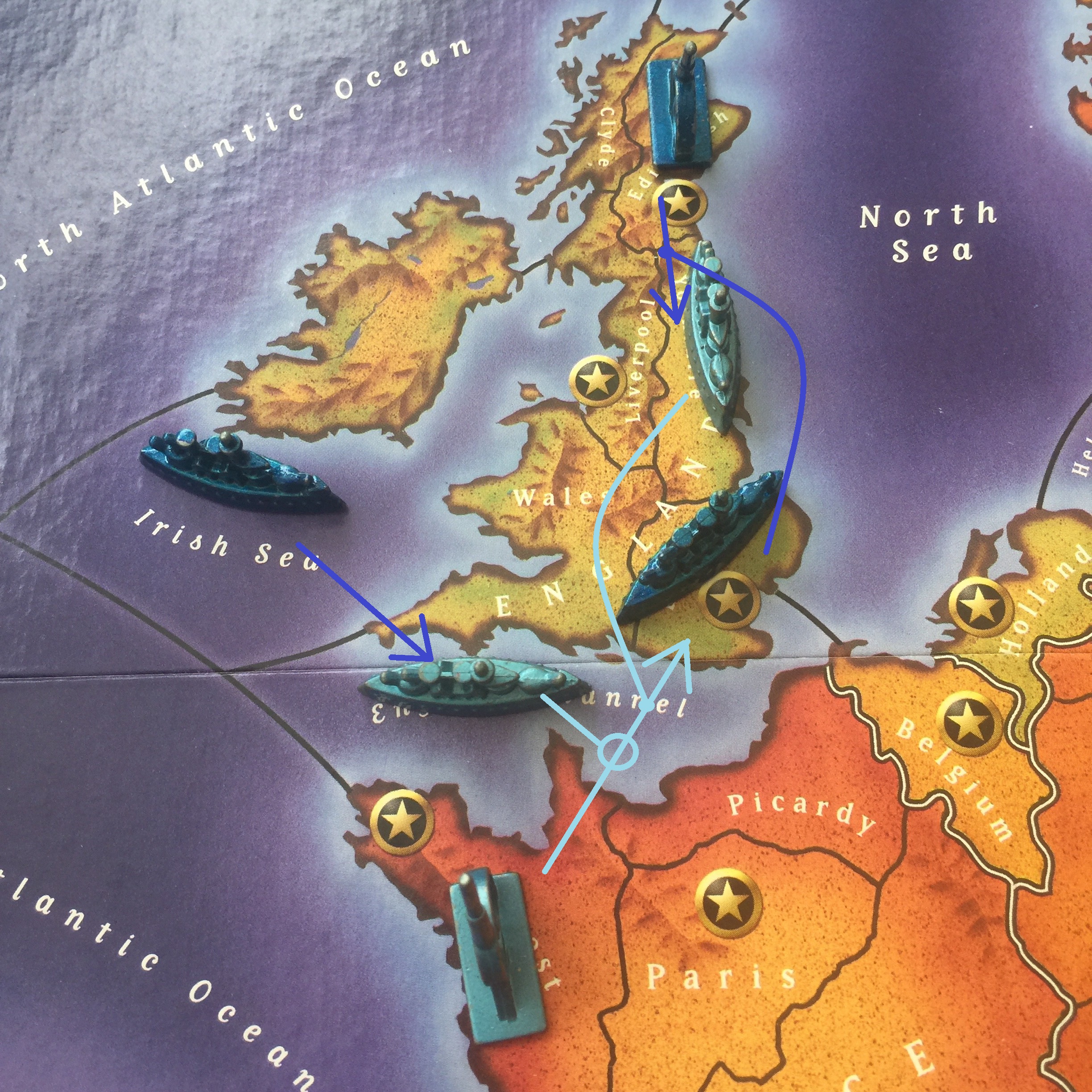After my article was published in the Zine, René van Rooijen, on Facebook, suggested another rule to eliminate the paradox.
The suggestion is this:
If a convoying fleet is attacked, the convoy is suspended and the other orders are carried out first. Then the convoy is made if it is still possible.
René suggests that this rule only be used in cases where there is a paradox.
This rule works just as well as mine when it comes to the elimination of convoy paradoxes. The difference is in the results of the rule. In most cases there is no difference, but if you look at the original example in Simon and Manus' article (my example 1c), a difference appears. If you use my rule, the convoy is made first and it cuts the support from London so that the attack on the English Channel dislodges the convoying fleet after the convoy has been made. This seems acceptable to me, as the dislodging of the fleet is only possible because of the convoyed attack. If you use René’s rule, the fighting over English Channel is done before the convoy so that the convoying fleet is not dislodged. The subsequent cutting of the support from London is therefore unimportant.
René’s argument against my suggestion is that the fleet which is dislodged after making the convoy has to retreat, and so in fact you get both a move and a retreat which may be an advantage. This is avoided using his version of the rule.
You already know that a paradox only appears if a convoyed attack cuts support to an attack on a convoying fleet (which was the reason for the AvalonHill 1982 rule). So René’s rule may as well be formulated in this way:
If a convoying fleet is attacked, the convoyed attack does not cut a support, not even if the supporting unit is dislodged.
The consequence of this is that it becomes possible for a dislodged unit to give support, which I believe to be an unacceptable violation of the basic rule about cutting support.
The purpose of my article was to introduce a rule to eliminate the paradox which may also be used as a general rule, and in this way I think that my suggestion is preferable to René’s. I'm absolutely against allowing a dislodged unit to give any kind of support, as I have stated in my article. If you use René’s rule on my example 3, including the attack from Western Mediterranean, you find that the fleet in Mid-Atlantic is not dislodged because the convoyed attack on Spain does not cut the support (until it is too late), and I think this is an unacceptable result.
Or take this simple example – not a paradox in sight:

The result is that both supports are cut, and so there is no change. Neither my rule nor René’s become relevant in this case.
But if you add: English Fleet Irish Sea – English Channel, both rules are possible to use.

If neither rule is used, the result is the same, as the attack from Irish Sea is indifferent.
If my rule is used, the convoy is under attack and the possibility of the convoy should be examined first. Since the convoy is possible there is no change.
But if René’s rule is used, the convoyed attack is suspended and the other moves are carried out first. This means that the support from London is at first not cut, and so the result is: The French Fleet in Yorkshire is dislodged and the English Army in Edinburgh goes to Yorkshire. Afterwards the convoyed attack on London cuts the support, but now it is too late, as the fighting has already taken place. In my opinion this result is unacceptable as well.
So I agree with René that his rule should only be used when there is a paradox.
Another thing that has been brought up in the discussion following my article is regarding what happens when convoyed attacks bounce. The general rule about standoffs is that if an attack bounces, the attacking units stay in the fields they came from just as if they were ordered to hold. It is implied that the convoying route can take the convoyed army back.
But what if the fleet isn't there anymore?
You can choose between three options:

|
Torsten Bille (itbille@fasttvnet.dk) |
If you wish to e-mail feedback on this article to the author, and clicking
on the envelope above does not work for you, feel free to use the
Dear DP...
mail interface.